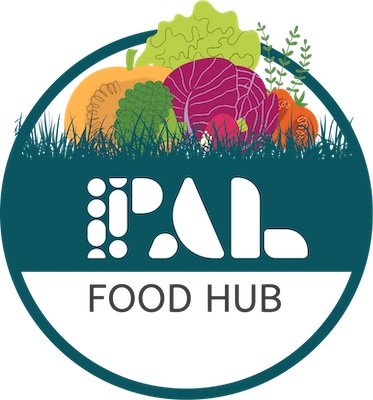From complete trail system to better gateways, what Spartanburg could look like in 2027
Published by Herald Journal- full article here.
Imagine five years from now riding public transit into Spartanburg along the recently landscaped Asheville Highway or West Main Street corridor, or walking to your job in a nearby office building downtown.
At lunchtime, the reimagined and pedestrian-only Morgan Square is filled with visitors and office workers dining at a wider range of restaurants, or shopping at any of the new minority-owned businesses.
When the afternoon is done, you take a jog or ride a bicycle on the finished 50-mile Daniel Morgan Trail System. Then you're ready to head back downtown again for dinner, absorbing the sounds of music and vibrant conversations before taking in a show at the redeveloped Carolina Theater.

Those are just some of the possibilities in an imagined 2027 that could ring true if OneSpartanburg, Inc.'s new five-year Vision Plan 2.0 is successful.
Based on the groundwork laid in Vision Plan 1.0 that kicked off in 2017, expect to see a bigger, better and more diverse Spartanburg five years from now, according to Allen Smith, president and CEO of OneSpartanburg, Inc.
"Spartanburg has made tremendous (progress) over the past five years, but our work is far from complete," Smith said at Thursday night's kickoff of the new Vision Plan 2 at Chapman Cultural Center.
A $6.3 million fundraising goal has been set to fund Vision Plan 2.0, and already $3.4 million – or 54% – has been pledged by community partners, said Todd Horne, vice chair of the Vision Plan.
6 major goals for Spartanburg
The Vision 2.0 Plan identifies both areas of progress and regression in the past five years.
The new plan was developed by Broad Ripple Strategies, a planning firm that has worked on more than 90 projects in 60 communities nationwide.
For the next five years, the six primary goals are:
► Raise levels of broadly shared prosperity: Continue to raise the median household income, which increased by $11,651 between 2014 and 2019, a 26.7% increase. Also, continue to reduce the child poverty rate, which declined 8.5% during the same period.
► Increase educational attainment: Boost the number of high school graduates who pursue secondary education and address racial inequities. An estimated 28.8% of white residents obtained a bachelor's or higher degree from 2015 to 2019, yet only 14.4% of Black residents did.
► Attract and retain a talented workforce: Two barriers keeping many out of the labor force are lack of child care and transportation. Plan leaders suggested increasing the use of vans and carpooling, and creating more childcare and private preschool programs, and raising the educational attainment levels.
► Diversify Spartanburg County's economy: The plan notes the strength of the county's manufacturing and logistics sectors, but points out the need to provide more Class A office space, recruit more corporate and knowledge-based sector jobs; and support high-growth, "homegrown" business startups.
► Improve quality of life for residents. Support more streetscapes, parks, private investments in restaurants and retail businesses, as well as neighborhood hubs such as Cowpens, Greer and Woodruff.
► Reduce racial equity gaps in entrepreneurship and business ownership. "If Spartanburg County is to maximize its chances for success, it must seek to improve outcomes for all its residents," the plan states. To that end, establish support services for small and minority-owned businesses and entrepreneurs.
Gateways into downtown Spartanburg
In addressing quality of life, leaders said more needs to be done to improve the gateway corridors to downtown Spartanburg by getting investors and private property owners to rehabilitate rundown properties, add landscaping and update signs.
"Gateways are the key transportation corridors that serve as a community’s “front door” and have an outsized influence on the first impressions of visitors and prospective investors and residents," the plan states.
Also, the plan supports expanded public transit options; completion of the 50-mile Daniel Morgan Trail System, called The Dan; and building a new meeting space downtown capable of accommodating up to 1,000 people for regional music and cultural festivals.
It also supports the continued closure of West Main Street at Morgan Square to vehicular traffic; and supports the design of a "world-class reimagining of the public realm in Morgan Square."
The plan also notes the need for more affordable and diverse housing options; multifamily housing in downtown Spartanburg; and higher-priced "executive" homes geared toward "mid- and peak-career professionals that many businesses in Spartanburg County must attract in order to be successful."
Next steps
OneSpartanburg, Inc. spokesman Zach Fox said the first priority is to meet the fundraising goal of $6.3 million.
"We are still raising money to fully fund the Vision Plan 2.0," Fox said. "In the meantime, we are analyzing and establishing the resources our county has for elements of the key focus areas of talent, economy and place."
Vision background
The first Vision Plan unveiled in 2017 included 42 investors committing $4.5 million over five years to address the need for more talent, an improved image, greater prosperity and a better quality of life.
Contact Bob Montgomery at bob.montgomery@shj.com. Please support Herald Jornal coverage of Spartanburg County with a digital subscription.
Site by: ALINE, A Marketing Company





